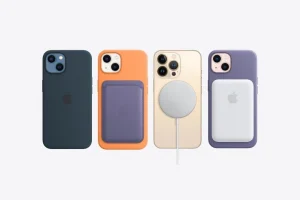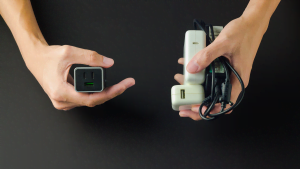Phone batteries are called Lithium-ion battery (Li-ion battery) which is abbreviated as LIB. They are rechargeable and are constructed with three components, which are positive electrodes, negative electrodes, and electrolyte.
Commercially, the materials used for the three components are:
- The positive electrode used for construction is a metal oxide, which is either a layered oxide, a polyanion, or a spinel.
- The negative electrode used is made from carbon, which is always graphite.
- The electrolyte is basically a lithium salt that is mixed in organic solvents such as ethylene carbonate or diethyl carbonate.
The different material choices determine the battery voltage, battery life, energy density, and the safety of the phone battery.
Why phone battery explodes?
Phone batteries are basically made up of electrodes and electrolytes. The various chemical reactions that happen within the battery and the physical reactions outside the battery often cause it to explode. The various causes are explained below in the next section.
The causes of phone battery explosions.
The most recent phone battery explosion scandal is that of the Samsung Galaxy Note 7. Consequently, Samsung had to kill the production of the model and recall the phones from customers, offering them a full refund or an exchange for either a Galaxy S7 or S7 Edge. On a side note, phone’s battery isn’t the only kind that is at risk of explosion. Another scandal, which is as equally infamous, if not more, involves half a million hoverboards.
The various causes of phone battery explosions are:
- Short Circuits: short circuits occur when the two electrodes of the Lithium-ion phone battery come into contact with each other, which then results in energy being redirected to the electrolyte contained inside. As energy is being pumped inside the volatile electrolyte, it becomes unstable and the electrolyte reacts with other chemicals creating heat and gases, which consequently generates thermal runway that causes the battery to burst into flames.
- Physical damages: when the phone or phone battery falls accidentally or is deliberately hit, it can cause a puncture on the thin sheet of plastic holding the electrolyte within the battery thus causing the electrolyte to leak out and thereby, bridging both electrodes.
- Metal scraps: small metallic objects may be present inside the battery during its manufacturing process, thereby causing a short circuit between the electrodes and ultimately setting off a thermal runway.
- CPU Overheat: sometimes when the CPU overheats, it might alter the charging process or algorithm of the phone battery and triggers an explosion.
- Faulty Battery Chargers: the use of faulty or wrong phone battery chargers can cause an explosion as the charger might supply higher voltage than the battery or its control circuit can handle. Or, the charger might be designed for a different power system entirely.
But not all is gloom and doom for our batteries’ safety. There are already various countermeasures being done in combating this safety hazard. For example, a charging cable that disconnects power after the battery is full to reduce overheating risk and the stress on battery.









